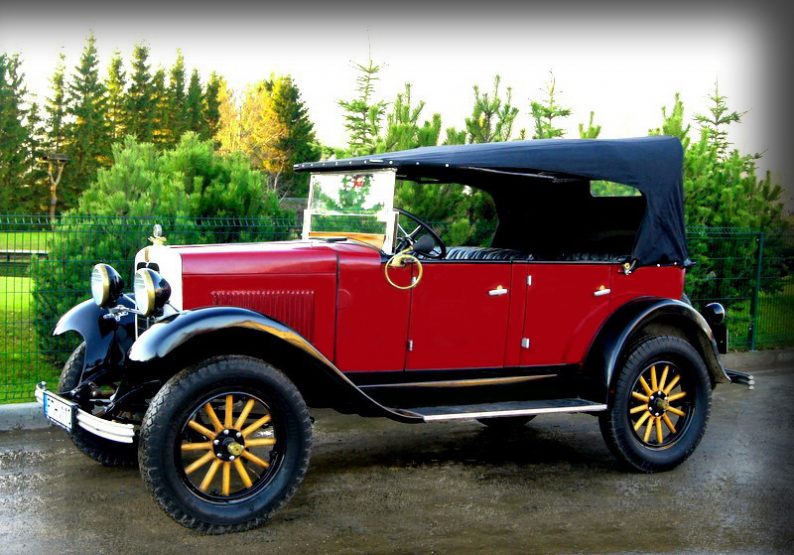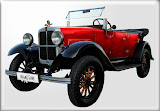
Cars of the Club: 1927 Erskine Model 50 Touring
Category:Garage,Library,ArticlesThe Erskine was an American automobile brand produced by the Studebaker Corporation of South Bend, Indiana, USA, from 1926 to 1930. The marque was named after Albert Russel Erskine (1871–1933), Studebaker’s president at the time. During his term as president, Erskine encouraged Studebaker engineers to develop advanced engines. As a result, the company achieved numerous racing wins and a bigger share of the upper-price market. This left Studebaker without an entry level automobile in the United States, and Erskine, who had always been fascinated by smaller European vehicles, saw market potential in a short-wheel-base compact car, especially if it could expand Studebaker’s presence in the European market.
The first Erskine (Erskine Six) was introduced to the world on October 7, 1926 at the Grand Palais, in Paris, France. The United Press ran the following announcement: “For the first time in the history of European motor car development, an American car has been the sensation of the automobile show
in Paris.” According to sources, more than 1500 orders for the Erskine automobile were placed at the exhibition.
When introduced in time for the American 1927 model year, the car was named after its creator, and marketed as The Little Aristocrat. To make the Erskine affordable, Studebaker fitted the cars with six-cylinder Continental engines rather than the more advanced Studebaker units and priced the cars at $995. Body design was by Ray Dietrich; the design proved to be quite a head-turner, and received numerous accolades from the British and French press. Unfortunately, his new design was not appreciated by American consumers. Initially, sales demand was promising. However, within a year Ford introduced its Model A and priced it at $525, undercutting the Erskine by $470. In 1930, the last year that the Erskine automobile was produced, the price had topped over $1000.00. Sales were reported at only about 25,000 per year, which was not enough to make a profit. Furthermore, even though the Erskine was conceived for a European market, no substantial European market was ever developed.
To remedy this, Studebaker marketing suggested that the Erskine become a larger car which, when implemented, grew the wheelbase from 108 in (2,743 mm) to 114 in (2,896 mm). The Erskine was no longer small, and became more like its Studebaker brethren. Ultimately, the Erskine was absorbed into Studebaker by May 1930. The Erskine automobile was dropped from Studebaker’s production line and replaced with the Model 53, which was also known as the Studebaker Six, a name that was already well accepted by the public. Soon after the Erskine automobile was discontinued, Albert Russel Erskine retired from Studebaker. Faced with loss of control of Studebaker, Albert Russel Erskine committed suicide in 1933.
Production totals (model year) and car models for Erskine
1927 – 24,893 units
1927 Erskine Six Series 50 Tourer
1927 Erskine Six Series 50 Coupe
1927 Erskine Six Series 50 Sedan
1927 Erskine Six Series 50 Custom Coupe
1928 – 22,275 units
1928 Erskine Six Series 51 Touring
1928 Erskine Six Series 51 Club Sedan
1928 Erskine Six Series 51 Cabriolet
1928 Erskine Six Series 51 Sedan
1928 Erskine Six Series 51 Royal Cabriolet
1928 Erskine Six Series 51 Royal Sedan
1929 – 25,565 units
1929 Erskine Six Series 52 Club Sedan
1929 Erskine Six Series 52 Cabriolet
1929 Erskine Six Series 52 Sedan
1929 Erskine Six Series 52 Royal Cabriolet
1929 Erskine Six Series 52 Royal Sedan
1930 – 22,371 units
1930 Erskine Six Series 53 Tourer
1930 Erskine Six Series 53 Regal Tourer
1930 Erskine Six Series 53 Business Coupe
1930 Erskine Six Series 53 Club Sedan
1930 Erskine Six Series 53 Regal Coupe
1930 Erskine Six Series 53 Sedan
1930 Erskine Six Series 53 Regal Sedan
1930 Erskine Six Series 53 Regal Landau
Erskine Model 50 Touring, 1927
Manufacturer – Erskine
Model – Model 50 Touring
Year of production – 1927
Body type – cabrio, convertible
Number of doors – 4
Number of seats – 5
Engine position – front
Drive wheel – rear
Fuel – petrol
Number of cylinders – inline 6
Cooling – liquid
Capacity – 2396 ccm, 145.5 cu-in
Bore – 66.7 mm, 2.626 in
Stroke – 114.3 mm, 4.5 in
Fuel system – carburetor, 1 x Stromberg
Max power [kW / PS] – 29.0 / 40.0 at 0 rpm
Gearbox – M3
Wheelbase – 2718 mm, 107 in
Maximum speed – 100 km/h, 62 mph
Owner – Dalius Linkevičius
Eglė Linkevičiūtė and Dainius Nagelė photos.




2 Comments
Warning: Trying to access array offset on value of type null in /home/klasikaus/domains/klasika.us/public_html/wp-content/themes/enigma-premium-advance3-7-3/core/comment-function.php on line 11
Kristina
March 26, 2013at 11:55 pmSveiki! Norėjau pasidomėti, ar Jūs nuomojate mašiniuką šventėms? Dėkoju
Warning: Trying to access array offset on value of type null in /home/klasikaus/domains/klasika.us/public_html/wp-content/themes/enigma-premium-advance3-7-3/core/comment-function.php on line 11
Gary Anderson
December 4, 2014at 12:01 amI am purchasing a 1927 Erskine Type 50 touring anyone out there have any details on this model.